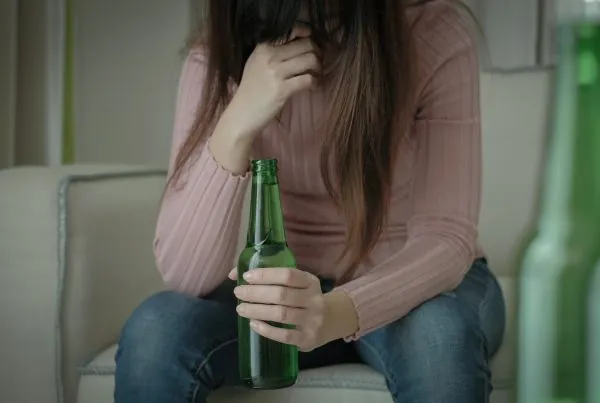Press Release: RAND – www.rand.org
–
Children who are drinking alcohol by 7th grade are more likely to suffer employment problems, abuse other drugs, and commit criminal and violent acts once they reach young adulthood, according to a RAND Health study released today.
Following a group of young people from 7th grade through age 23, researchers found that youthful drinking was not only associated with an increased likelihood of people having academic and social problems during their teenage years, but was associated with a heightened risk of behavior problems at least through their early 20s.
“Early drinkers do not necessarily mature out of this problematic lifestyle once they become young adults,” said Phyllis Ellickson, a RAND researcher and the study’s lead author. “Early alcohol use is a signal that someone is likely to have more problems as they transition into adulthood.”
Researchers say the findings suggest that adolescents who drink are at high risk and should be targeted early with intervention programs that focus not only on alcohol, but also cigarette smoking, use of illicit drugs, and perhaps other problem behaviors. The study appears in the May issue of the medical journal Pediatrics.
Underage drinking is a major national problem, with estimates suggesting that by the 8th grade one-fourth of all adolescents have consumed alcohol to the point of intoxication. In addition, adolescent drinking plays a key role in the four leading causes of death among teens–car accidents, accidental injuries, homicides and suicides.
The RAND findings are from a study that followed about 3,400 youths who were recruited in 1985 from 30 socially and economically diverse schools in California and Oregon when they were enrolled in 7th grade. Participants were surveyed during the 7th grade, 12th grade and at age 23 about their current use of alcohol, tobacco and other drugs, and about a number of behavioral issues.
At the outset of the study, about three-quarters of the 7th graders had used alcohol. Researchers labeled 46 percent as “experimenters” (had consumed alcohol, but fewer than three times in the past year and not within the past month) and 31 percent as “drinkers” (three or more alcoholic drinks within the past year or any drinking in the past month). Nondrinkers (those who had never drunk alcohol) accounted for 23 percent of the 7th graders.
Students who used alcohol by the 7th grade were far more likely than non-drinkers to report using other substances, stealing and having school problems. For example, the drinkers were 19 times more likely to be weekly smokers or hard drug users, and 4.5 times more likely to have stolen items in the past year when compared with non-drinkers. Experimenters reported fewer problems, but were still 2.5 times more likely to have used hard drugs and twice as likely to have stolen when compared with non-drinkers.
The differences remained at the 12th grade, although they were less pronounced. Compared with non-drinkers, drinkers were 5 times more likely to be weekly marijuana users, 3 times more likely to use hard drugs or experience several drug-related problems in the past year, twice as likely to have been suspended or dropped out of school, and about twice as likely to engage in violent or criminal behavior in the past year.
Experimenters were about twice as likely to be weekly marijuana users, use hard drugs, and have multiple drug problems, 1.2 to 1.7 times more likely to engage in violent or criminal behavior, and 1.5 times more likely to commit a felony or be suspended from school.
“Early drinking clearly is associated with other problems that develop in school and in many other settings,” said Joan S. Tucker, a RAND psychologist and another author of the report. “Differences between drinkers and nondrinkers show up early and persist over time.”
At age 23, those identified in 7th grade as drinkers still showed significantly more behavior problems than those who had been nondrinkers. The drinkers were 2 to 3 times more likely to use hard drugs, experience multiple drug problems, or have undergone alcohol or drug treatment, 3 times more likely to have been arrested for drunk driving, twice as likely to engage in violent or criminal behavior in the past year, and nearly 1.5 times more likely to report missing work for no reason.
The differences were smaller for the group identified as experimenters in 7th grade. Compared with nondrinkers, experimenters were twice as likely to have multiple drug problems, 1.6 times as likely to engage in criminal behavior, use hard drugs, or have undergone alcohol or drug treatment, and nearly twice as likely to have been arrested for drunk driving.
“These results suggest that drinking in early adolescence may be among the most important risk factors for a wide variety of behavior problems during the transition to young adulthood,” Tucker said. “Preventing drinking initiation before Grade 7 may help reduce these later problems.”
Researchers say it is not clear what mechanisms link early alcohol use to behavior problems later in life. It may be that alcohol disrupts the development of adequate social and academic skills that are needed to succeed later in life. Or early alcohol use may signal that an individual is predisposed to use drugs and develop other behavioral problems. The research was supported by the National Institute on Alcohol Abuse and Alcoholism. The project also included RAND researcher David J. Klein.
RAND Health is the nation’s largest independent health policy research organization, with a broad research portfolio that focuses on medical quality, health care costs and delivery of health care, among other topics.






